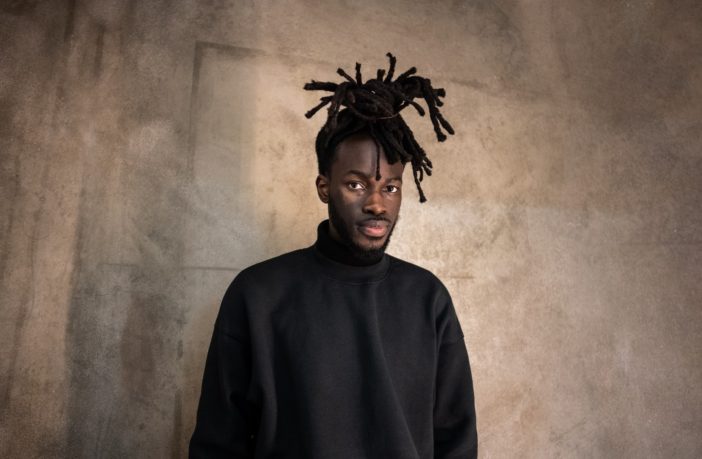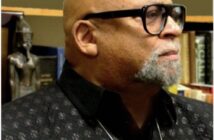When presented with an opportunity to achieve great heights, we have a responsibility to hold the door open for others and provide a path for them to aspire and follow. Tech entrepreneur and EBONY 2022 Power 100 awardee Iddris Sandu is a firm proponent of this belief. Compton-bred with Ghanian heritage, Sandu understood early on in life that Black excellence had the power to extend beyond the confines that our community has usually considered possible. With the development of his company Spatial Labs (sLABS), he has been able to merge technology with culture with a concern for the wellbeing of our community.
Spatial Labs has been invested in by social figures with immense cultural currency such as Jay-Z, Scooter Braun, the late Nipsey Hussle and Anthony Tolliver, to name just a few. Last June, Sandu developed LNQ, garments embedded with innovative chip-technology to elevate the access consumers have to brands and retailers. The technology “tracks a physical item’s authenticity, origin, ownership history, real-time value and enables added benefits such as loyalty incentives, enhanced insights and more.”
At 25, Sandu has achieve more than a multitude of entrepreneurs, regardless of any race or age, have ever been able to accomplish. Yesterday, Spatial Labs secured a $10 million in a seed funding round through Blockchain Capital and Marcy Venture Partners. At the closing of the round, the total investment in the company was brought to a substantial $14 million.
Sandu caught up with EBONY to discuss this historic announcement and his hopes for the future of tech.
EBONY: What sparked the creation of Spatial Labs?
Iddris Sandu: Since I was a young kid, I always had this focus on what it would mean to represent the Black community in the best way as it pertains to innovation. It’s something that throughout history, we’ve heard about such as in the film Hidden Figures as Katherine Johnson writes the calculation for the lunar moon landing by hand. There are all these different spaces of innovation that’s existed, but it’s always through a lens of contributions into platforms that weren’t originally designed for us to begin with. Because of this I realized that the true level of cultural impact will not come from consuming, but rather creating.
Steve Jobs and the iPhone inspired me by informing me that it was possible for me to not just think about building an app, but building a phone that the app can go on. That’s the true power and spaces within that [Black people] are seldom allowed access to. A decade later and consulting with some of the largest tech companies gave me not only the rapport, but it gave me the insights into how to effectively do that and the different pieces that would be instrumental towards making that vision happen. One of those pieces is obviously the actual innovation that needs to happen from a device standpoint. My team and I asked ourselves, “What are we building and why are we building it? What are we actually inventing? What are we building that’s on par with some of the largest companies today? What financial support do we have to be able to build that future?” I think those things build the crux of what Spatial Labs embodies and what it means—a company that develops physical products with a focus on tech equity, making things available for everyone and representing technology through a way that has been often undermined.
As a young entrepreneur, what are some of the triumphs and challenges you’ve experienced and are there any pieces of advice to share on young entrepreneurs?
In general, you’re always going to experience some level of resistance, especially when you’re young. That’s just irrespective of your color and the community you come from. The world is generally not receptive to young people making huge strides in innovation. It’s always been the older generations taking care of and leading the way for the young, but we’re not realizing that it’s not necessarily just based off of physicalities. For example, the young are now inspiring older generations to actually be more emotionally conscious, more empathetic and more aware of the environment and the effects that we have on it. When you pair that with also being Black and being in tech, you start to see it start to pile up. One of the things you would naturally experience is, which pertains within the Black community itself, if you’re not within those same validation points that people are expecting you to be within, your message is a little less relevant. Nipsey Hustle delivering me to the gates of hip hop which led me to work with major figures in the culture gave the credibility for folks to receive my message a bit differently and holistically but not everyone has that privilege. As a young founder of color, you have to add 100 times more validation points to ease people that will potentially want to get invested in your products to understand that you’re getting the same level of quality or whatever it is that others don’t. That’s one thing I feel has been challenging.
Spatial Labs just acquired $10 million seed in funding. What does this accomplishment mean to you?
With the brutal killing of George Floyd, there was roughly around $1.2 billion in funding that was available for founders of color and ever since then, it’s dropped by 30% every year. We’re at a stage now where $120,000,000 has been allocated within the last year. If that is the case, then Spatial Labs raised 10% of total funding that was allocated to Black founders—that’s a problem. The reality is that although raising a total of $14 million puts us in a position that no founder under 30, even being a person of color under 30, my concern with that is we should technically be able to raise more because we’ve been held back so much.
There is so much gatekeeping of information that can actually create much more equity across various industries. With the continued mission of Spatial Labs and an investment of this magnitude, we’re paving the way for younger people to know that they can be in these spaces as well. This is a history defining moment as this is the largest seed round ever raised by a person of color under the age of 30. What’s particularly inspiring to me about it is that by seeing something like this happen for the first time, others can know it’s possible. It’s one less thing that we have to feel like we never had the opportunity to do, especially for young entrepreneurs in this market.



